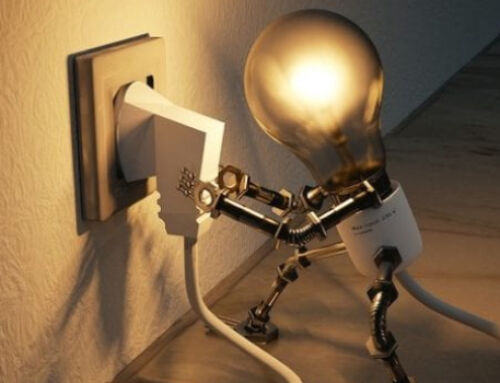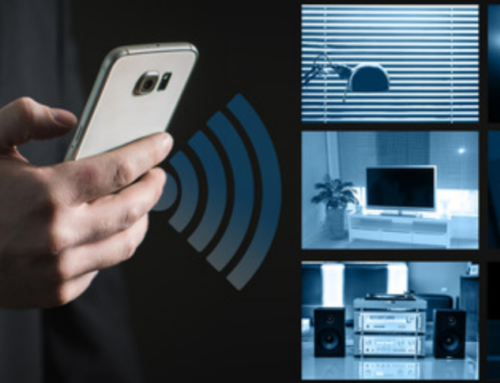The light bulb. We use them every evening so that we can continue to go about our lives with the benefit of sight. It’s easy to forget that on the timeline of human history, light bulbs are a recently new invention and prior to their invention people made do with gas lamps or candles.
Lucky for us, the modern era offers us a range of different lighting options which are fitted into our homes, cars and even our phones. But who came up with such a marvellous invention and how did we get to this level of convenience?
Incandescent lights, fluorescent lights, LEDs. These great inventions light up our homes when we most need it, but how did they come to be?
A Bright Spark
The first electric light was invented in 1802 by Humphry Davy. The invention came when Davy was experimenting with an electric battery – as he connected wires to the battery and a piece of carbon, the carbon was illuminated as electrons passed from one batter to the other. The revolutionary invention is known as the Electric Arc lamp and despite how groundbreaking it was, it burnt too bright too shortly to be used for any practical solution. Despite this, it set the path for a course of experimentation and refinement of the technology.
Early Developments
Over the ensuing decades, other inventors fiddled and tweaked with the design. Notably, in 1840 the British scientist Warren de la Rue created a light using a coiled platinum filament within a vacuum tube. The higher melting point of platinum allowed for high temperatures and the vacuum chamber restricted the number of gas molecules that were able to react with the platinum in the tube.
The First Light Bulb
The English physicist Joseph Wilson Swan was first to create a ‘light bulb’ in 1850. Swan’s design incorporated carbonised paper filaments, contained within an evacuated glass bulb. The design was faulted by the lack of a good vacuum and constant supply of electricity which resulted in bulbs with a short lifetime. As the decades rolled on Swan continued to experiment with improved vacuum pumps which allowed for a more effective illumination. He also found that using a treated cotton thread reduced the issue of the bulb blackening.
Thomas Edison
Perhaps the name most synonymous with the history of the light bulb is Thomas Edison. Although Edison wasn’t the one to invent the incandescent light bulb he was the first to patent a commercially practical bulb. There were many inventors working on the design at the time but Edison’s version of the bulb used an efficient incandescent material encased within a better vacuum than his competitors. But perhaps the best feature of the bulb was the high resistance he was able to achieve, which made the bulb brighter and more efficient.
Tungsten
Tungsten was the next major development in light bulb technology. It was introduced in 1906 by The General Electric Company, who patented tungsten filaments within incandescent light bulbs. The technology was further developed in subsequent years by the company to improve the light’s lifetimes.
Fluorescent Lighting
The German glassblower Heinrich Geissler and physician Julius Plücker made an incredible discovery during the 19th century – after evacuating air from a long glass tube and passing a current through it, they created light! This invention was called the Geissler Tube and would pave the way for fluorescent lamps.
Edison and Nicola Tesla both experimented with fluorescent lamps in their careers but neither’s efforts caught any commercial traction. Peter Cooper Hewitt created a light in the late 1900s that was an early version of the fluorescent lamp, but it wasn’t until well into the 20th century when this new type of lighting actually took off. Neon-lights, fluorescent lights and low-pressure sodium lamps, which are used in streetlamps, are all derived from these early experiments.
LEDs
Nick Holonyak Jr was the first to invent the light-emitting diode light in 1962, with red diodes. LED lights use a semiconductor to convert electrical energy into light. These lights are efficient as they are small and specifically directed. Yellow and green followed soon after and before long the technology became common in indicator lights and calculator displays.
Blue diodes were not invented until the 1990s, but this invention led to a white diode, which was simply blue with a coating of phosphor and before long researchers found that white light could be made with a combination of blue, red and green. Before long LEDs made their way into flashlights, TVs and traffic lights.
In the beginning, LEDs were no more effective than incandescent bulbs, however, the technology has come a long way and today they are up to 85% more efficient than traditional lights.
As they are a newer technology, LED lighting is more expensive than traditional lighting, however, in the last 10 years the price has dropped up to 80% and the savings in energy more than makeup for the purchase cost.
If you have any questions about installing lighting in your home or business or have any other electrical queries, please don’t hesitate to get in touch with HunterCON today.







